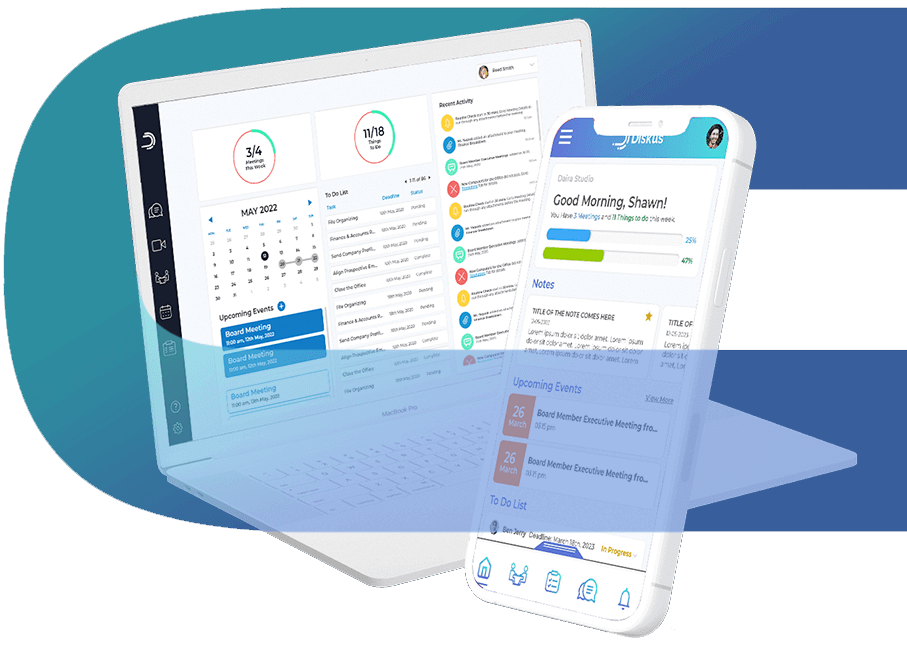In today’s fast-paced corporate world, technology is no longer a luxury—it’s a necessity. The way organizations manage their board meetings has undergone a massive transformation, thanks to innovative tools and platforms. Gone are the days of cumbersome paperwork and tedious coordination. Now, technology like Diskusboard has redefined how board meetings are planned, conducted, and followed up, making them more efficient, secure, and collaborative than ever before.
If you’re curious about how technology is shaping the future of board meeting management, read on as we dive into six key areas where tech is making a profound impact.
1. Simplified Scheduling and Coordination
The Struggles of Traditional Scheduling
Coordinating a board meeting used to be a logistical nightmare. Matching calendars, sending endless emails, and dealing with last-minute rescheduling often consumed more time than the meeting itself. For board members spread across different time zones, the process was even more challenging.
Technology to the Rescue
With advanced tools like Diskusboard, scheduling has become a breeze. These platforms integrate seamlessly with calendars, allowing participants to find the best meeting times with just a few clicks. Automated reminders, real-time updates, and RSVP tracking ensure everyone stays informed and prepared. By eliminating manual scheduling, organizations can focus on what truly matters—productive discussions and decision-making.
2. Effortless Agenda Creation and Distribution
Why Agendas Are Key
A well-structured agenda is the backbone of any successful board meeting. However, creating and distributing agendas manually often leads to delays and miscommunication.
How Technology Streamlines the Process
Platforms like Diskusboard make agenda creation simple and efficient. With pre-built templates and drag-and-drop functionality, board secretaries can quickly outline discussion points, allocate time slots, and add supporting documents. Once finalized, the agenda is instantly shared with all participants, ensuring everyone is on the same page. This not only saves time but also sets the stage for focused, result-oriented discussions.
3. Enhanced Collaboration with Real-Time Tools
Breaking Down Communication Barriers
Effective collaboration is essential for board meetings, but traditional methods often fall short. Paper-based sharing or email threads can’t match the dynamic needs of modern boards, especially those working remotely.
Interactive Features That Foster Engagement
Technology bridges these gaps by offering real-time collaboration tools. For instance, Diskusboard enables board members to annotate documents, share insights, and comment on agenda items during the meeting. These features promote active participation, even in virtual settings. With interactive whiteboards and voting tools, decisions can be made collaboratively and transparently, ensuring all voices are heard.
4. Secure Document Sharing and Data Storage
The Risks of Outdated Methods
Board meetings often involve sensitive information, from financial reports to strategic plans. Relying on email attachments or hard copies can expose this data to unauthorized access or loss.
How Technology Ensures Security
Modern platforms like Diskusboard prioritize data security. With encrypted file sharing, role-based access controls, and secure cloud storage, organizations can confidently share confidential documents. Additionally, built-in audit trails provide a transparent record of who accessed what, adding an extra layer of accountability. By safeguarding information, technology builds trust and protects organizations from potential risks.
5. Automating Minute-Taking and Task Management
The Challenge of Manual Minute-Taking
Minute-taking is a crucial yet time-consuming aspect of board meetings. Relying on manual methods often leads to errors, delays, or incomplete records, which can hinder follow-up actions.
The Power of Automation
Automation tools have revolutionized this process. With AI-powered transcription and minute-taking features, Diskusboard captures key discussions and decisions in real time. Post-meeting, the platform generates accurate minutes, assigns action items, and tracks progress. This ensures nothing slips through the cracks, making follow-ups more organized and efficient.
6. Insights and Analytics for Continuous Improvement
Why Analytics Matter
Every board meeting presents an opportunity to learn and improve. However, without data, it’s difficult to identify what worked well and what didn’t.
Leveraging Technology for Better Outcomes
With analytics tools embedded in platforms like Diskusboard, organizations can track meeting metrics such as attendance rates, engagement levels, and time spent on each agenda item. These insights help refine meeting structures, ensuring continuous improvement over time. By embracing data-driven decision-making, boards can maximize the value of their sessions.
Conclusion
Technology has undeniably revolutionized board meeting management, turning what was once a tedious and error-prone process into a seamless and productive experience. Platforms like Diskusboard have paved the way for organizations to enhance collaboration, improve efficiency, and ensure security in every step of the meeting lifecycle.
As we move forward, the integration of advanced tools into board meetings will only become more essential. By embracing these technological advancements today, organizations can set themselves up for success in the future. Whether you’re looking to simplify scheduling, secure your data, or foster better collaboration, Diskusboard offers the solutions you need to revolutionize your board meetings.

